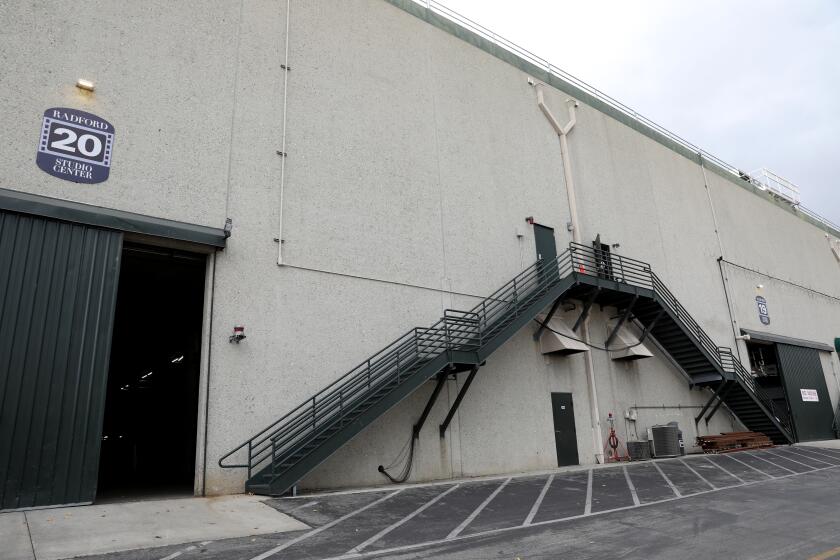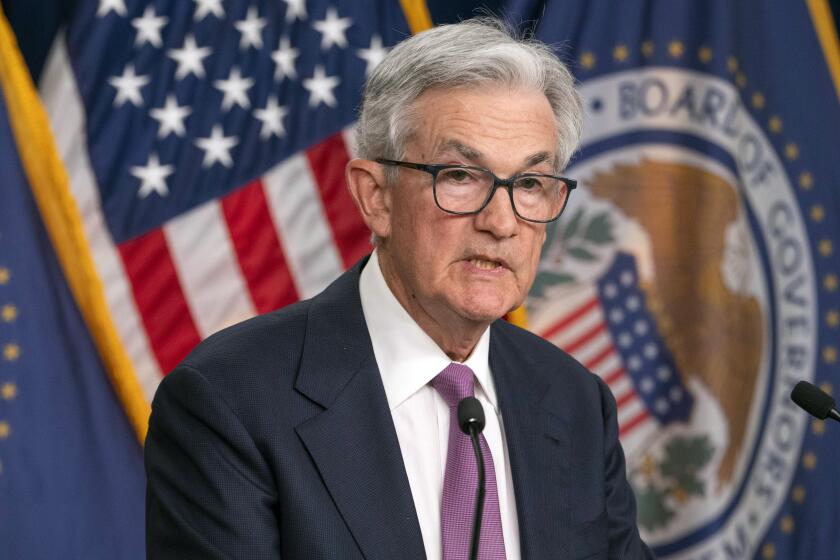With the Cold War a Memory, Europe’s Defense Industries Fight for Life
German and Spanish aerospace titans plan to merge. Britain’s two largest defense concerns have joined forces as the world’s third-biggest arms producer. The French government is beginning to privatize its defense businesses.
The end of the Cold War a decade ago has left Europe’s defense industries fighting for shares of a dwindling arms market and inspired a round of pan-European mergers and talk of transatlantic deals.
“We are at the edge of a military-technological revolution,” says Dan Goure, deputy director for political and military studies at the Center for Strategic and International Studies in Washington.
Since 1993, defense companies in the United States have undergone a revolution, shrinking their operations, merging with rivals and laying off workers.
Europe’s bloated defense industry is now at the same crossroads, and pressure is growing to cut costs and pool development to create a new generation of high-tech weaponry.
The British military has shrunk from 311,650 servicemen in 1989 to 212,000 this year, according to the International Institute of Strategic Studies. NATO data say Britain’s defense spending has dropped from 4.5% of its economy to 2.8% over the decade.
France has cut its military forces from 466,000 personnel in 1989 to 317,000 and spending from 3.8% of the economy to 3%.
Germany now makes do with 332,000 people in the armed forces, compared with 494,000 in West Germany and 173,000 in East Germany at the time the Berlin Wall fell. Defense spending has been below 2% of the economy since 1993.
For all of NATO’s European members, military spending as a share of the economy has fallen by a third over the last 10 years.
The U.S. defense budget in 1997 was 3.6% of the American economy, down from 6.3% at the end of the 1980s.
How Europe’s defense industries evolve will determine the type and cost of military equipment that European and North American pilots, soldiers and sailors use in the next century--as well as the future of several million jobs on both sides of the Atlantic.
The U.S. Defense Department has begun three studies looking at the impact of the new arms market and at how--and if--the United States should encourage foreign defense contractors to become major suppliers to the American military.
Gordon Adams, deputy director of the International Institute for Strategic Studies in London, cites technology export controls and “buy domestic” policies in both the United States and Europe as a threat to defense cooperation.
“There is a risk of fortress Europe, but we have a fortress America problem too,” he says. “For governments to acquire equipment cost-effectively, and for militaries to work with each other, both of these fortresses are going to have to be taken down brick by brick.”
Vance Coffman, chairman and chief executive of the American defense giant Lockheed Martin, also says alliance members need to take a multinational approach in developing and acquiring weapons.
For the United States, the changes “will require an unprecedented willingness to be dependent on others--even close and trusted allies--for some of the means to protect our security,” he says.
Who exactly those partners are going to be is another question.
The U.S. military and defense industry have close working relations and a semi-open market with Britain.
British Aerospace, whose $12.7-billion purchase of Marconi in January made it the world’s No. 3 defense contractor after Lockheed Martin and Boeing, reckons it will soon do more business with the U.S. military than with the British government.
Other countries’ arms businesses, notably in France, are less easy to penetrate.
“A national linkup between the French and the U.S. does not appear a realistic prospect,” says Nigel Vincent of the Royal United Services Institute, a London think tank with close links to Britain’s military.
Analysts cite both French and American protectionism, American distrust of French export controls and France’s historical reluctance to integrate into NATO command as impediments to cooperation between those two nations.
“Partnering with the British is relatively easy. The French are extremely difficult. The Germans are in between,” Adams says.
Seeking a common European Union foreign and defense policy, western European governments in 1998 backed vague plans for common arms procurement and a big European defense company, based around British Aerospace, France’s Aerospatiale and Germany’s DaimlerChrysler Aerospace, also known as Dasa.
But while politicians debated the company’s form, industry bosses already were eyeing one another as potential rivals, partners or targets.
Much to the embarrassment of the governments involved, which were acting like proud in-laws waiting for their offspring to marry in the name of European integration, the plan was scuttled in January when British Aerospace--developer of the Harrier jump jet used by U.S. and British forces--rejected the Dasa merger and bought Marconi instead.
The deal created “the 400-pound gorilla” at the European party, says Goure at the Center for Strategic and International Studies.
Richard Bassett of the influential Jane’s Defense Weekly magazine says the deal sank any chance for creating an industrial concern with equal footing for trinational partners.
He predicts Europe’s defense industry, except for the British Aerospace-Marconi consortium, will “be dead within five years.”
But the deal seemed to serve as a wake-up call to other European firms.
Germany’s Dasa has since announced a merger with Spain’s state-owned Construcciones Aeronauticas, beating both British Aerospace and France’s Aerospatiale Matra to the punch.
And Finmeccanica of Italy and the British engineering group GKN, which plan to merge their helicopter operations, are an example of emerging single-product partnerships.
Such smaller partnerships, rather than major mergers, likely will be the European trend, says Karina Forster, a defense analyst at the Cologne, Germany, research firm International Public Affairs/ESL.
“Mergers will be on branches-- like missiles, like electronics, like helicopters,” she says.
Even France is trying to reform by cutting back state ownership of defense companies, encouraging the restructuring of its biggest defense firms and even looking outward, says David Kirkpatrick, senior lecturer in defense systems engineering at University College London.
In May the French government approved the merger of the missile maker Matra with Aerospatiale, France’s largest aerospace company, and Aerospatiale-Matra’s chairman, Yves Michot, says the new company is looking for further European linkups.
“Maybe one day we can actually merge with an American company, but we shouldn’t do this too hastily,” Michot says.
No matter the strategy, analysts say it is unlikely that even a cohesive Europe could do without military and political support from the United States, for the next decade at least.
Although the European projects to develop tanks and infantry combat vehicles outnumber those underway in America, European research and development budgets are only 16% of U.S. spending.
And the recent conflict in Kosovo spotlighted Europe’s inability and unwillingness to mount a major military operation by itself.
At June’s Paris Air Show, business and political leaders worried about Europe’s shortage of spy satellites, unmanned observation planes and jumbo cargo aircraft as well as the antiquated aircraft of some nations that couldn’t fly front-line missions during the Kosovo conflict.
That explains why Britain, which has 20 joint development ventures each with Germany and France, is increasingly tying in with the United States, including the Joint Strike Fighter, the TRACER stealth armored reconnaissance vehicle and a universal modem for satellite communications.
“If you stick with a European model, you are essentially a generation behind,” says Goure. “If you are not a player with the Americans, can you in fact be at the cutting edge? I don’t think so. The British have come to realize that.”
More to Read
Inside the business of entertainment
The Wide Shot brings you news, analysis and insights on everything from streaming wars to production — and what it all means for the future.
You may occasionally receive promotional content from the Los Angeles Times.






